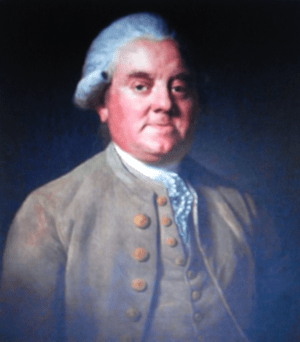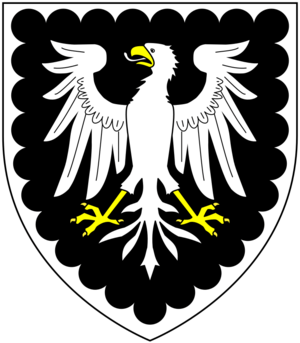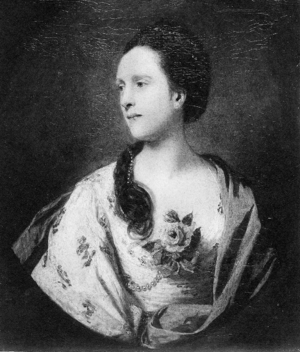Sir Robert Palk, 1st Baronet facts for kids
Quick facts for kids
Robert Palk
|
|
|---|---|
 |
|
| President of the British East India Company | |
| In office 14 November 1763 – 25 January 1767 |
|
| Preceded by | George Pigot |
| Succeeded by | Charles Bourchier |
| Personal details | |
| Born | December 1717 Ashburton |
| Died | 29 April 1798 Haldon House |
| Spouse | Anne Vansittart |
Sir Robert Palk, 1st Baronet (born December 1717 – died April 29, 1798) was an important person in British history. He lived at Haldon House in Devon, England. Sir Robert worked for the British East India Company, which was a powerful trading company. He became the Governor of the Madras Presidency in India.
Back in England, he was also a Member of Parliament (MP). He represented the towns of Ashburton and Wareham in the British Parliament for many years.
Contents
Who Was Robert Palk?
Robert Palk was born in December 1717 in a small farming community in Ashburton, Devon. His father, Walter Palk, was a farmer. He also earned money by transporting wool fabric, called serge, to market.
Robert had a sister, Grace, and a brother, Walter. Robert's nephew, also named Walter Palk, later became an MP for Ashburton. Robert Palk was the one who brought fame and wealth to his family.
How Did Robert Palk Get His Education?
Robert Palk went to Ashburton Grammar School. Later, his uncle, Robert Abraham, helped him go to Wadham College, Oxford, a famous university. He finished his studies there in 1739.
Robert Palk's Career Journey
After college, Robert Palk became a deacon (a type of church leader) in 1739. He worked in two churches in Cornwall before moving to London in 1741. In London, he caught the attention of Sir Robert Walpole, who is often called Britain's first Prime Minister. Walpole helped Palk go to India.
Working for the East India Company
In 1747, Robert Palk became a chaplain (a priest for the military) for Admiral Edward Boscawen. He sailed to India and arrived at Fort St David in 1748. At this time, Britain and France were competing for control of trade in India. This competition soon turned into battles. The British government eventually took more control over India from the East India Company.
Rising Through the Ranks
In 1749, Robert Palk became the chaplain at Fort St David. This was an important promotion. He later met General Stringer Lawrence, who became a lifelong friend. Lawrence was known as the "Father of the Indian Army."
In 1752, Palk got a very good job as "Paymaster and Commissary in the Field" for Lawrence's army. This meant he handled money and supplies. He also helped discuss peace terms with the French in 1754. Palk was becoming very involved in the business side of things in India.
Returning to England and Back to India
Palk started to earn a lot of money, partly because Stringer Lawrence helped him with good business deals. However, the East India Company directors told him to focus only on his religious duties. Palk didn't like this, so he returned to England.
In 1761, he stopped being a clergyman and married Anne Vansittart. She was the sister of Henry Vansittart, a wealthy colleague from India.
While Palk was in England, the East India Company faced problems in India. The company leaders decided Palk was the best person to fix things. So, in October 1761, Robert Palk went back to India. He joined the Company's Council and helped manage their finances and trade.
Becoming Governor of Madras
In November 1763, Robert Palk became the Governor of Madras. With this new power, he became even more involved in trade and continued to increase his personal wealth.
Palk left India for good in January 1767, when he was 50 years old. He was welcomed by King George III and the Company's directors. Even after returning to England, he helped many others who wanted to go to India to make their fortunes.
His nephew, Jonathan Palk, said that Robert was a kind and honest person. He helped his friends and family, not to be lazy, but to be active and successful.
Robert Palk in Parliament
Robert Palk served as an MP for Ashburton in 1767 and again from 1774 to 1787. He also represented Wareham from 1768 to 1774. His brother, Walter Palk, also served as an MP for Ashburton.
Even though he lived in other places, Robert Palk stayed connected to Ashburton. He owned land there and even gave the local church a new organ.
Palk was very interested in politics, especially matters about India and the British East India Company. He usually supported the government. He was a Tory (a political group), but he didn't like a law passed in 1773 that changed how the East India Company was run.
Letters from India
Robert Palk exchanged many letters with Warren Hastings, who was the first Governor-General of India. These letters are now kept in the British Museum. Sometimes, Hastings would ask Sir Robert for favors. For example, in 1770, Hastings wrote to Palk about selling diamonds. Diamonds were a common way to send large amounts of money back to England.
Sir Robert Palk's Special Honor
On June 19, 1782, King George III made Robert Palk a Baronet. This was a special honor given to him for his important work in helping Britain control India. After this, he was given the title "Sir Robert Palk, 1st Baronet."
He was also made a "Freeman" of the City of Exeter. This was a special privilege that his son and future family members kept for many years.
Family Life
On February 7, 1761, Robert Palk married Anne Vansittart. She was the daughter of Arthur van Sittart and the sister of Henry Vansittart, his wealthy colleague from India. Anne died in 1788, twenty years before her husband.
Robert and Anne had one son and three daughters:
- Sir Lawrence Palk, 2nd Baronet (born around 1766 – died 1813) was their son and heir. General Stringer Lawrence was his godfather. Because of this, all future male heirs in the family were named "Lawrence."
- Anne Palk (1764–1791) married Sir Bourchier Wrey, 7th Baronet in 1786. She died at age 27, leaving three young children. A monument in Tawstock Church remembers her as a kind and loving wife and mother.
- Catherine Palk, who died young.
- Emelia Palk, who also died young.
When Did Robert Palk Die?
Sir Robert Palk passed away at Haldon House on April 29, 1798. He was buried with his wife in Dunchideock church.
Places Named After Robert Palk
Several places are named after Sir Robert Palk:
- Palk Bay and the Palk Straits, which are stretches of sea between India and Sri Lanka.
- The Palk Arms public house (a type of pub) in the village of Hennock in Devon.
- "Palk Street" in Torquay, which is named after his family.



